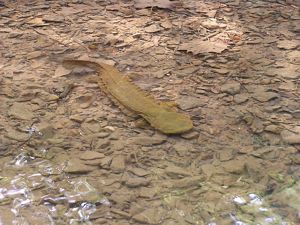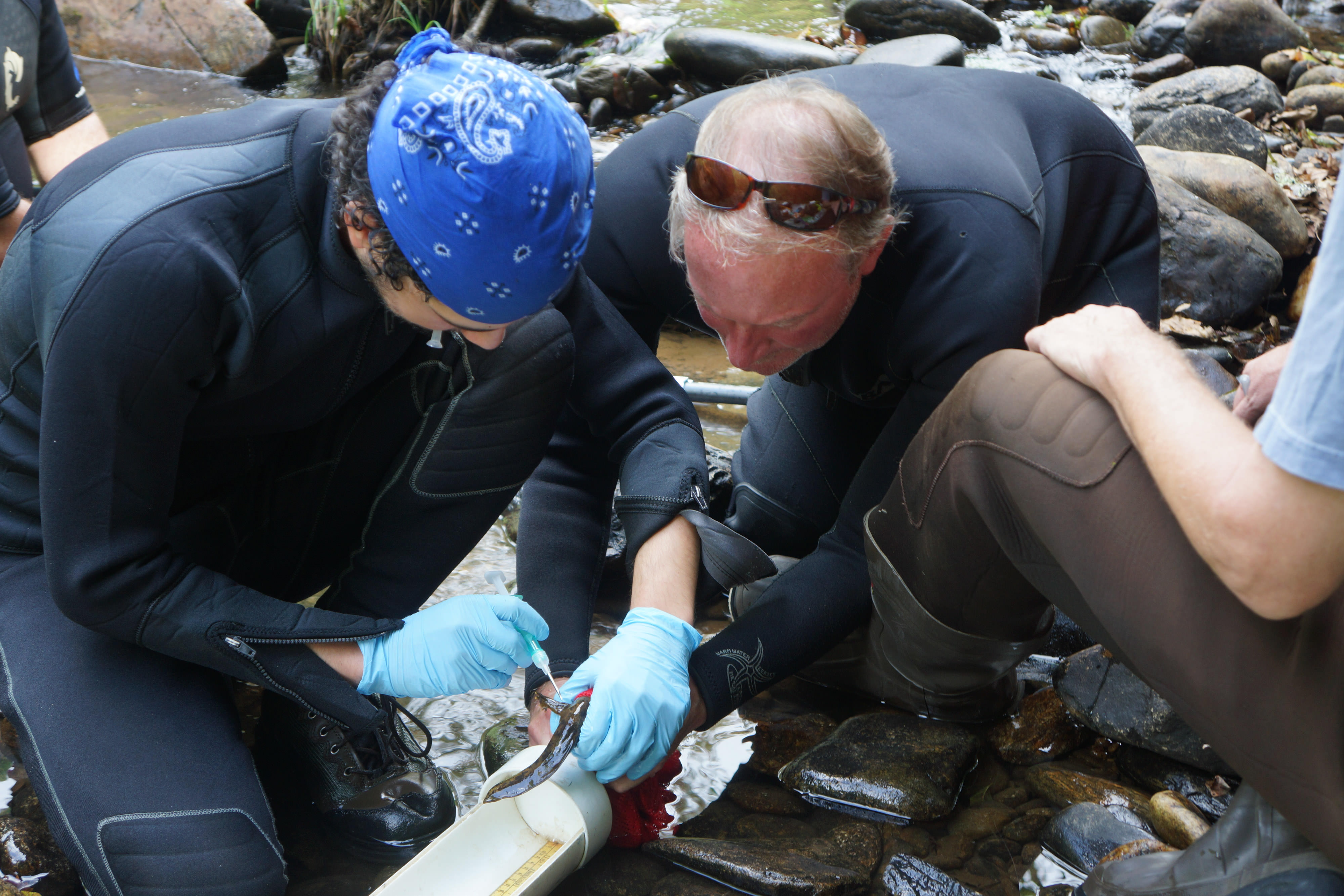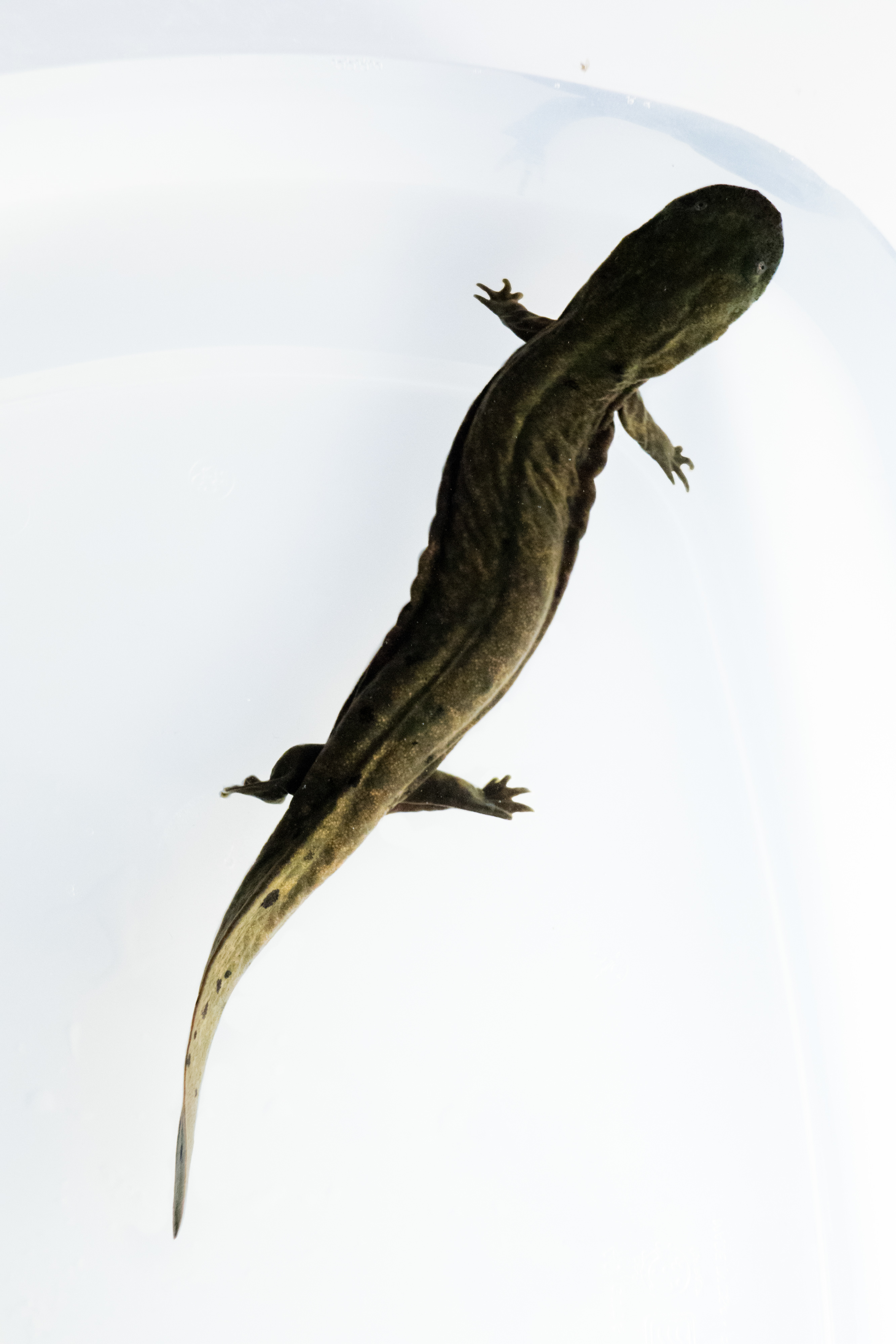Meet the Hellbender Salamander
Called such unflattering names as “mud devil,” “devil dog” and “ground puppy,” the hellbender salamander is the largest aquatic salamander in the United States, growing as long as 30 inches, though the average is 12-15 inches. It can be found slowly crawling across the bottoms of clear, silt-free mountain streams from southern New York to northern Alabama. A separate subspecies, the Ozark hellbender, is confined to a small part of southeast Missouri and northeast Arkansas.
The hellbender is generally nocturnal, spending most of the day under rocks on the riverbed, emerging at night to hunt. Its diet is mostly crayfish, supplemented by small fish, other hellbenders, tadpoles, toads and water snakes. After having covered 30-60 feet and eaten up to 4 crayfish in a night, the salamander returns to its home rock by morning. Adults are extremely territorial, usually chasing off any daytime visitors.
Only occasionally leaving the water, the hellbender makes little use of its lungs. Indeed, one individual survived after having its lungs surgically removed. The salamander absorbs most of its oxygen from the water through folds in its skin that maximize surface area. Young hellbenders have gills, which they lose after about 18 months.
Protecting the Hellbender Salamander
Though some populations remain healthy, the hellbender is listed as Near Threatened by the IUCN and is close to qualifying for Vulnerable status, mainly due to habitat loss and degradation. The Ozark Hellbender is particularly imperiled, and experienced drastic population declines in the late 1980s and 1990s. In 2011, it was listed as Endangered federally as per the Endangered Species Act.

Dam Removal Helps Hellbenders
Big Indian Creek in Indiana was identified as a viable potential site for reintroducing hellbender salamanders, but only if the two large low-head dams were removed. See how low-head dam removal benefits both people and nature.
The Nature Conservancy is working with Purdue University and the Indiana Department of Natural Resources to conserve this special creature while there’s still time. We have adopted a threefold approach to conservation through outreach to local residents, land protection and cutting-edge lab research on captive-rearing of hellbenders.
TNC’s dam removal work across many states is also helping to restore hellbender habitat. With barriers like dams gone, hellbender populations can more easily find one another, leading to improved reproduction and overall species health.
Hellbender Facts
- The hellbender is sometimes unflatteringly referred to as a snot otter, devil dog and mud cat. Please don't call it a mudpuppy—that’s an entirely different species of salamander.
- Hellbenders have been around for more than 150 million years.
- Hellbenders are the largest salamanders in North America.
- The scientific name of hellbenders, Cryptobranchus means “hidden gills.” Hellbenders lose their gills around 1.5 to 2 years of age when the gills are absorbed into the body. As adults, they breath through blood vessels in their skin.
- Hellbenders have lungs that are not used to breath. Scientists believe they use their lungs for buoyancy.
- Though it has a flat, eel-like tail, the hellbender rarely swims. Instead, it will trudge along the river bed with its short legs, using the rough pads on its toes for traction.
- Hellbenders are opportunistic cannibals- adults will eat smaller adults as well as the eggs and larvae from their own nests and those of others.
- Contrary to the belief of some fishermen, the hellbender is not poisonous. If you find an unfortunate hellbender on the end of your line, please cut the line and let it go.
- Remember, the hellbender is endangered in Indiana and endangered or threatened in some other states. Under no circumstances should they be killed, trapped or kept as pets.





